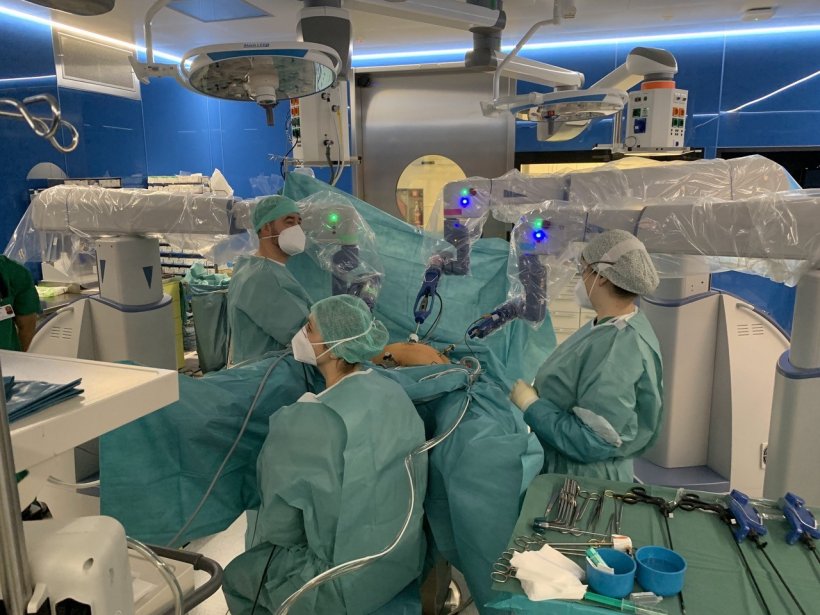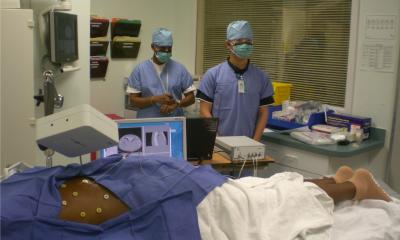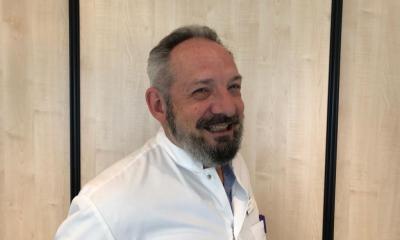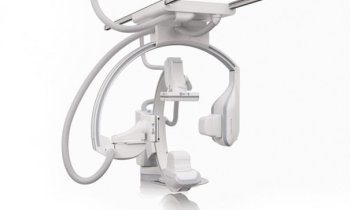
Source: Landeskrankenhaus Feldkirch
Sponsored • Robotics in the OR
Increased safety for patients und less stress for the surgeons
In early 2020, Landeskrankenhaus (LKH – regional public hospital) Feldkirch in Austria procured two robotics systems. Dr Burghard Abendstein, head of department of Ob/Gyn, welcomes this – as he says – rather unusual but future-oriented decision of the hospital management and has been using the Asensus Senhance surgical system for laparoscopic procedures in gynaecology.
The system arrived in the middle of the first Covid-19 wave which significantly hindered implementation. Usually, the physicians receive a three-day training session at the company’s headquarters in Milan prior to commissioning of the robotic system. “Milan is located in Lombardy, at that time a dark-red Covid-19 zone. Thus, travelling was out of the question,” Dr Abendstein recalls. Asensus, however, was flexible enough to develop a special training programme which took place on site in Austria, conducted by two technicians and a surgeon who was already an experienced user of the robotic system.
Until today, Dr Abendstein and his team have performed approximately 50 interventions with the system, not only routine procedures such as the removal of tumours and cysts from the Fallopian tubes or the ovaries or hysterectomies but also more complex surgeries such as endometriosis resection. “Basically all conventional laparoscopic interventions can be performed with a robot – and that’s exactly what we are aiming at,” the head of department explains. This aim, however, is still a ways off since LKH Feldkirch being an academic teaching hospital has to train the junior physicians in conventional laparoscopy.

Source: Landeskrankenhaus Feldkirch
Abendstein is – in his own words – an early laparoscopy adopter: “I have witnessed this method from day 1 in the 1990s and am very familiar with the handling of the instruments. That is why I was immediately impressed by the Senhance system since the console hand movements are fashioned after the conventional movements. The same is true for the positions of the trocars – they are exactly the same as in conventional laparoscopy. Other manufacturers of comparable systems don’t do that.”
Another advantage – which also translates into a financial benefit – is the use of existing reusable trocars. While other systems require special instruments that have to be replaced after each intervention, the Senhance system uses the same trocars that are standard equipment in the hospital and which can be reused after sterilization. “That is sustainable and a cost advantage,” says Dr Abendstein.
For the patients safety is the key issue. Supported by the robot, the surgeons don’t tire as quickly and can concentrate longer. They are sitting relaxed and comfortably at the open console, looking at a height-adjustable screen next to the patient and have an overview over the entire OR situation. The system provides extremely clear high-resolution images in up to 6 x magnification. While the camera is controlled by the surgeon’s eye movements, the instruments inside the patient’s body are controlled by the surgeon’s hands. An integrated tremor filter removes minute trembling; thus the robot can achieve a degree of accuracy which is impossible to achieve for a human hand.

Abendstein expects safety to increase even more with future innovations: “I would like to see the surgeon being supported with additional optical function such as zoom, overlays or automatic image control. For training purposes it would be helpful to be able to guide the young colleagues with a cursor through the procedure. Asensus is an innovative company and the team sets great store by the further development of their portfolio. Thus I am sure the Senhance surgical system will continue to evolve.” (SB)
Profile:
Dr Burghard Abendstein is head of the Ob/Gyn department at Landeskrankenhaus Feldkirch/Austria and Director of the Center for Breast Cancer, Gynaecological Tumours, Endometriosis and Urogynaecology. He studied medicine in Innsbruck and was head of department at Landeskrankenhaus Hall in Tyrol before he joined LKH Feldkirch. He is a member of the Austrian Society for Gynaecology and Obstetrics and the Austrian Society for Gynaecological Surgery.
02.06.2021











